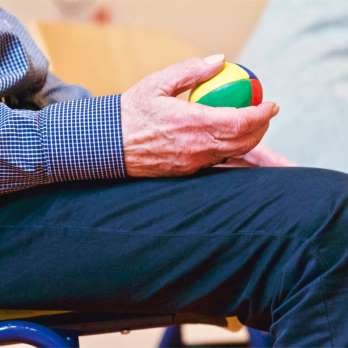What Some Have Learned About Early Signs of Parkinson’s Disease
Parkinson's disease affects millions of people worldwide, yet many cases go undiagnosed for years because early symptoms can be subtle and easily mistaken for normal aging or other conditions. Understanding the early indicators of Parkinson's has helped countless families take proactive steps toward better health outcomes. Recent research and patient experiences have revealed that recognizing these initial signs can make a significant difference in managing the condition effectively over time.

How Awareness Might Support Earlier Conversations With a Doctor
Being informed about Parkinson’s early symptoms can empower individuals to have meaningful discussions with healthcare providers before symptoms become severe. Many people report that their first noticeable signs included slight tremors in one hand, particularly when at rest, or changes in handwriting that became smaller and more cramped. Sleep disturbances, such as acting out dreams or experiencing restless leg syndrome, have also been identified as potential early indicators.
Healthcare professionals emphasize that early detection allows for better treatment planning and lifestyle modifications that can slow disease progression. When patients come prepared with specific observations about their symptoms, doctors can perform more targeted assessments and recommend appropriate neurological evaluations. This collaborative approach often leads to earlier diagnosis and more effective management strategies.
Why Some Families Choose to Learn About Early Indicators
Families with a history of Parkinson’s disease often seek education about early warning signs as a proactive health measure. Genetic factors can play a role in some cases, though most Parkinson’s cases are not directly inherited. Learning about early indicators helps families distinguish between normal age-related changes and potential symptoms that warrant medical attention.
Many families report that understanding these early signs has reduced anxiety and uncertainty about neurological health. When family members know what to watch for, they can provide better support and encourage timely medical consultations when necessary. This knowledge also helps families make informed decisions about lifestyle factors that may influence neurological health, such as exercise routines, nutrition, and stress management.
Exploring How Parkinson’s May Present in the Early Stages
Parkinson’s disease typically develops gradually, with symptoms appearing slowly over months or years. Motor symptoms are often the most recognizable and may include mild tremors, slight stiffness in limbs, or subtle changes in walking patterns. However, non-motor symptoms frequently appear first and can include loss of smell, constipation, mood changes, and sleep disorders.
Early-stage Parkinson’s may also manifest as reduced facial expression, softer speech, or decreased arm swing while walking. Some individuals notice difficulty with fine motor tasks like buttoning clothes or using utensils. These changes are often so gradual that they may be attributed to stress, aging, or other health conditions, which is why awareness and education are crucial for proper recognition.
| Treatment Type | Provider/Location | Estimated Annual Cost |
|---|---|---|
| Medication Management | Local Neurologist | $3,000 - $8,000 |
| Deep Brain Stimulation | Specialized Medical Centers | $75,000 - $125,000 |
| Physical Therapy | Community Health Centers | $2,400 - $6,000 |
| Speech Therapy | Private Practice/Hospitals | $1,800 - $4,500 |
Prices, rates, or cost estimates mentioned in this article are based on the latest available information but may change over time. Independent research is advised before making financial decisions.
Understanding the financial aspects of Parkinson’s treatment helps families plan for long-term care needs. Treatment costs vary significantly depending on the stage of the disease, chosen interventions, and geographic location. Many insurance plans cover basic neurological care and standard medications, but specialized treatments like deep brain stimulation may require additional coverage or out-of-pocket expenses.
The journey of understanding Parkinson’s early signs represents hope for millions of people worldwide. As research continues to advance our knowledge of this complex condition, early recognition remains one of the most powerful tools available for improving quality of life. Whether someone is experiencing potential symptoms themselves or supporting a loved one, staying informed about early indicators creates opportunities for timely medical intervention and better long-term outcomes. The key lies in maintaining open communication with healthcare providers and taking a proactive approach to neurological health throughout all stages of life.
This article is for informational purposes only and should not be considered medical advice. Please consult a qualified healthcare professional for personalized guidance and treatment.




